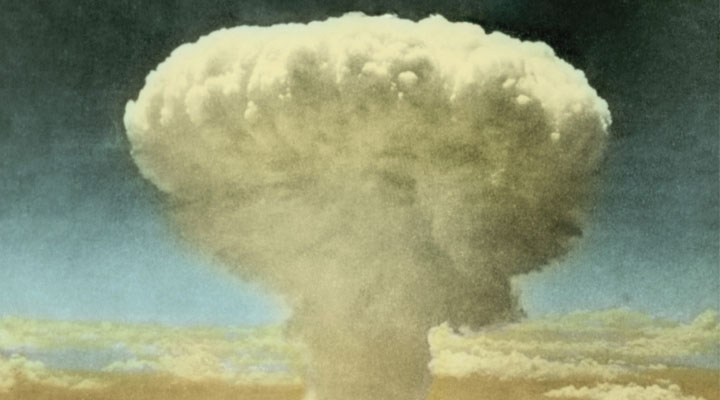Welcome to THE MAKING OF A NATION – American history in VOA Special English. I'm Steve Ember. This week, we continue our series of "time capsule" programs, each one exploring another facet, decade or period of America in the twentieth century. This week, science brings an end to World War Two and lays the groundwork for a new attention to research, development, and scientific education in the years to come. World War Two ended with an action that was never taken before in the history of warfare, and has never been taken since. It required the efforts of a team of scientists. Working in secrecy, they designed and built the first atomic bombs. President Harry S. Truman made the decision to use these weapons against Japan in August of nineteen forty-five.
"The world will note that the first atomic bomb was dropped on Hiroshima. We shall continue to use it until we destroy Japan's power to make war." America's use of atomic weapons brought years of conflict in Europe and the Pacific to an end. But it also marked the beginning of the nuclear age. And it represented, in a dramatic way, the growing importance of science and technology in modern times. Interest in science goes back to the earliest days of the nation. President Thomas Jefferson and Benjamin Franklin were famous not only as political leaders but also as inventors and scientists. President Abraham Lincoln and Congress established the National Academy of Sciences during the Civil War in the eighteen sixties.
And in the early nineteen hundreds, the nation created scientific offices to study and improve agriculture, public health, even air travel. By the start of World War One in nineteen fourteen, the federal government was employing scientists in many areas of work. President Woodrow Wilson created the National Research Council to organize the work of scientists and engineers to win the war. However, before World War Two, government support for science was generally limited. The government was willing to pay for research only to meet certain clear goals, such as better weapons or military transport systems. World War Two greatly changed the traditionally limited relationship between American scientists and the federal government. In the early years of the war, the German forces of Adolf Hitler showed the world the power of their new tanks, guns and other weapons.

President Franklin Roosevelt knew that the United States would need to develop modern weapons of its own if it entered the war. For this reason, Roosevelt established a National Defense Research Committee in nineteen forty to support and organize research on weapons. The new committee included some of the top scientists in America. Among its members were the presidents of Harvard University, the Massachusetts Institute of Technology and Bell Laboratories. The committee did its work so well that Roosevelt later formed an even more powerful Office of Scientific Research and Development. The leader of both groups was Vannevar Bush -- no relation to the future presidents. He had long experience as a professor of electrical engineering and as an inventor. Many scientists knew him.
Vannevar Bush put together a hard-working team. And in the years that followed, American scientists and engineers developed one invention after another to help the war effort. Scientists developed new devices to help the Navy find German submarines. They improved methods for bombers to find their targets. And they developed more powerful rockets to protect American troops when they landed on foreign beaches. American scientists and doctors also made great progress in improving the methods of wartime medicine. World War Two may well have been the first war in history in which a wounded soldier was more likely to survive than to die. But, in many ways, the most important scientific development of the period was the atomic bomb.
In nineteen thirty-nine, Albert Einstein wrote President Roosevelt a letter. The scientist told the president that it might soon be possible to build a powerful weapon -- a weapon that would use the power of the atom. And he urged Roosevelt to get American scientists to build the atomic bomb before German scientists could build one. Roosevelt agreed. He created a special team of scientists. Their work became known as the Manhattan Project. Roosevelt made sure that these scientists got all the money and supplies they needed. Roosevelt died before the scientists could complete their work.











